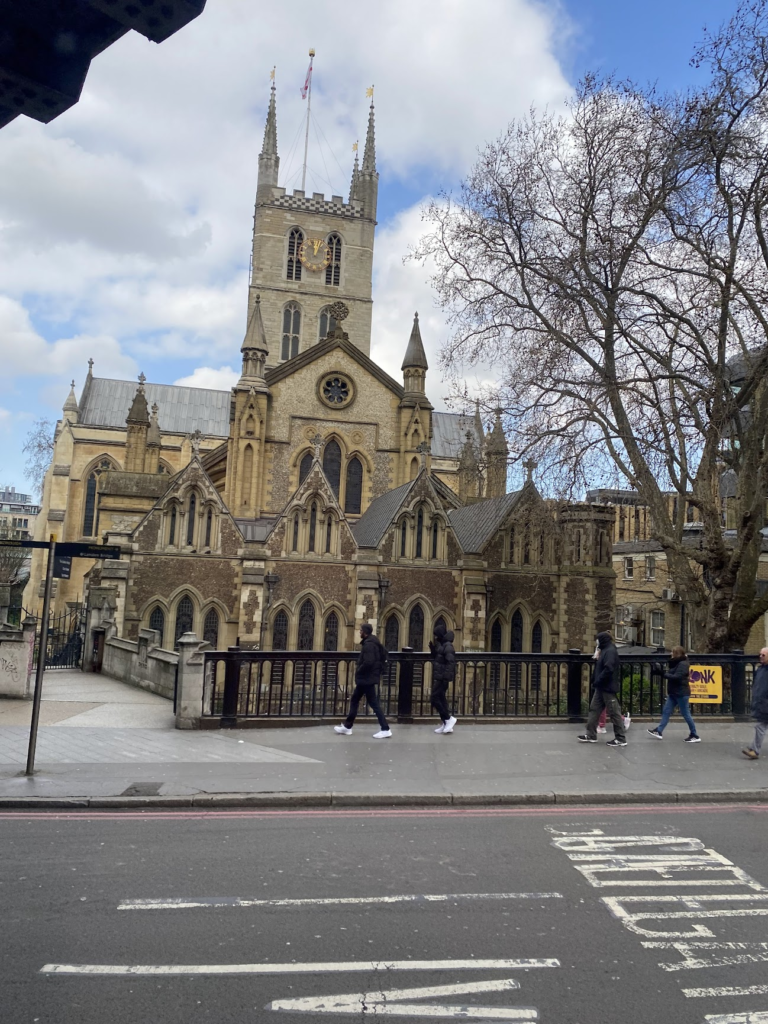The morning started off, rather delightfully and surprisingly, with a mild breakfast and superb coffee. We loaded the busses at 8:45 London Time but were held up by two classmates who’s claim was that their phones didn’t set to local time, and as such the alarms didn’t go off. None of us had to manually set the time on our phones to reflect London time, and our alarms had no problems going off, so make of that what you will. Microphone in the charter bus was broken, so our tour consisted of parking the bus, disembarking, and walking to the landmarks. Then, we’d huddle around the guide and listen to her recount interesting facts about the history and architecture of London.
The Tower of London, which we saw only from a distance, borders the Thames, its architecture emphasized by the presence of Tower Bridge, which echoes its walled-off, symmetrical, square medieval stone architecture despite having been built a long while after the Tower of London. The building was visible from the London Eye, which helped situate and contextualize the building.





To be completely honest, I was slightly underwhelmed by our tour; I loved looking at the monuments and enjoyed the scenery and architecture. I can, for the most part, identify the style of architecture and summarize some of the history behind them, but the amount of information shared regarding each monument left me wanting more. We did not go inside any structures. I’m glad we got to experience it, because it allowed me to become familiar with the structures I was seeing, but you know me – I wanted to know more more more! It would have been cool to receive more of that information in the moment, as opposed to after-the-fact research. Maybe I just needed to go on a tour with Ms. Hanline, who would have absolutely satisfied my criteria of tour guides by providing an overload of interesting facts and stories…all the nuances of history and art.
Following another jaunt through the city, we arrived at a shopping center with rooftop access overlooking St. Paul’s Cathedral, which is apparently England’s most beloved building. Now this, I did receive a great amount of in-the-moment information, which proved to be both enriching and inspiring.
All through the night and day during World War 2, volunteers took turns atop the dome, holding buckets of water and sand, prepared to put out fires and maintain the hope-inspiring, beautiful structure. The thought was: so long as St. Paul’s Cathedral is standing, there was hope for England. Apparently, regard for St. Paul’s Cathedral is so great that during the Blitz, the first call Winston Churchill would make in the morning would be to check up on the church. He’d ask, “is it still standing?” and wait with bated breath to find out whether the war he fought was a lost cause.



Marvelous Structure.
